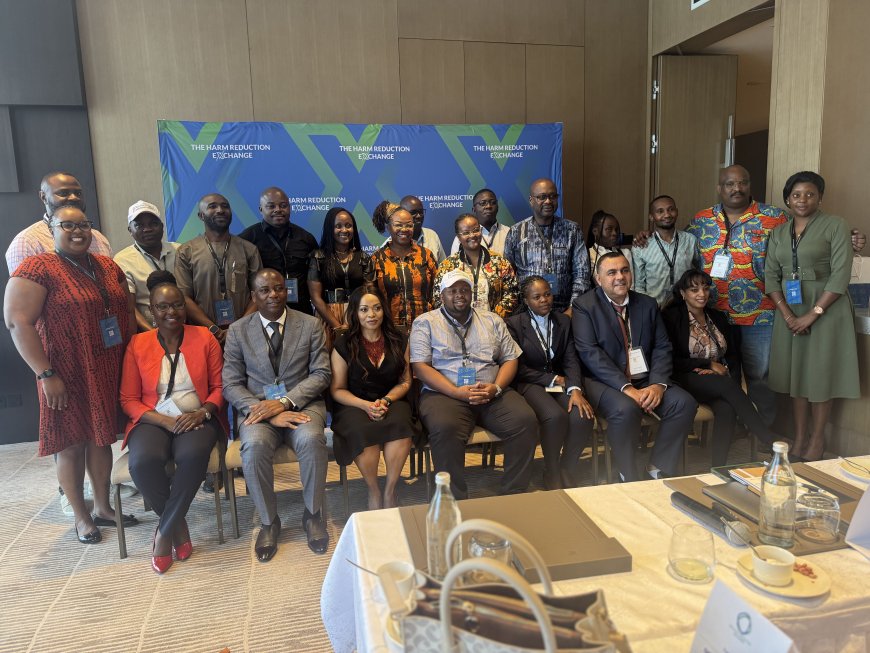An expert peer-to-peer roundtable on Harm Reduction was held this week at the JW Marriott Hotel in Nairobi, Kenya. The goal of the event was to foster a focused and high-level dialogue among leading Harm Reduction experts from all over Africa. This roundtable brought together like-minded practitioners to explore, discuss, and advance Harm Reduction approaches as Kenya prepares to launch smoke-free products in the country. 25 Key Scientific Opinion Leaders were in attendance to discuss the theme: ‘Harm Reduction and Public Health’.
The event kicked off with a welcome address from Dr. Mercy Korir, an award-winning Kenyan Medical Doctor, Journalist and Business Executive. While highlighting the importance of the theme of the event she said, “Whether we are addressing the impacts of tobacco, drugs, or alcohol, the core principle is the same: reducing the negative consequences associated with use, while acknowledging the realities of individual behaviours and societal contexts.”
She also emphasised the importance of harmonising science, policy and practice in order to enable innovation within the Harm Reduction space.The Founder/Executive Director of The Global Initiative on Substance Abuse (GISA)), Dr Martin Agwogie from Nigeria, gave an insightful overview of Harm Reduction in the opening keynote address. He outlined the various aspects and pillars of the practice, specifically focusing on Harm Reduction concerning drugs, alcohol, and tobacco. He stated that the message behind Harm Reduction is “come as you are” as opposed to “you have to quit, just say NO!”
For the day's second keynote, world-renowned Tobacco Harm Reduction Expert Professor Karl Fagerström, joined virtually from Sweden and shared his expertise in nicotine science. He also spoke about the behavioral aspects of tobacco use and illustrated the influence of neurobiology on the matter. He said that the factors that motivate cigarette smoking are not only nicotine but also other substances with reinforcing potential, sensory stimulation, engagement in the ritual/ habit, object attachment, and psycho/social benefits. He said,“When referring to tobacco users, we cannot use the term nicotine dependence. Tobacco is much more than nicotine.”
Dr Mohamed S Eltaweel, a consultant of psychiatry from Egypt, gave the third keynote address. He discussed the importance of integrating Tobacco Harm Reduction into clinical practice and having it inform counseling techniques. He also spoke about the various clinical approaches to smoking cessation. He explained the fact that extremely complex and nuanced psychological approaches are needed to help patients quit smoking. He stressed that it is crucial to handle each patient very carefully, as smoking and smoking cessation is an extremely sensitive matter with a multitude of contributing factors and roadblocks.
Nancy Mukabana Omulima, Advocate of the High Court of Kenya, gave the 4th keynote address, in which she explained the Kenyan perspective on the legal and regulatory challenges of Tobacco Harm Reduction and the local advocacy efforts put in place to combat them. She said, “Going forward, we need to increase local scientific research and data collection so that leaders and policymakers can understand the positive and negative impacts of Tobacco Harm Reduction and use this knowledge to inform future policies on the matter.”
The panel discussion that followed was titled: ‘The Policy Landscape for Tobacco Harm Reduction Within the ‘Kenyan Context.’ When asked about his thoughts on regulatory issues, Dr Benson Chuma of the Harm Reduction Society (Kenya) said, “It's not straightforward. It's a whole industry, from tobacco farmers to big multinationals. Tobacco Harm Reduction in this industry can be tricky because implementing policies related to the practice often takes a backseat due to policymakers being ‘risk averse.’ The tobacco conversation is difficult to have.” Dr Edwin Mbugua of the Harm Reduction Society (Kenya) said, “Science is critical in finding pragmatic solutions based on global experiences to help and inform us on our Tobacco Harm Reduction journey.” During the Q&A section, Yemi Gimba Williams, the Standards Organisation of Nigeria, eloquently said, “Harm Reduction is a journey, not a destination.”
The last keynote of the day was given by Joseph Magero, Chairman of The Campaign for Safer Alternatives (CASA), on the topic of ‘Consumer Advocacy, Addressing Youth Initiation, Prevention & Communication Strategies.’ His presentation was centered around his belief that, to protect the next generation, Tobacco Harm Reduction advocacy must embody two principles: responsible access and robust education.
In the final panel of the day on ‘Balancing Risks and Benefits – Youth Use, Research Gaps and the Way Forward for THR,’ Emmanuel Mbenza Rocha of the DRC stated that peer pressure is the key motivator for the youth to take up smoking, and it's important to expose young people to safer alternatives. Further, “The challenge is that the marketing and communication campaigns need to be much more effective and impactful and must ensure that they do not add more smokers but rather reduce them.”
Dr Cedric Namegabe used the DRC as an example, saying that culture also plays a big role and tobacco is used more in the rural areas of the DRC as a natural part of life. He applauded the presentation of Dr. Eltaweel and Dr. Agwogie, who spoke about the step-by-step approach to education and counseling for cessation. He also pointed out that more well-educated people will be able to understand the scientific evidence behind Tobacco Harm Reduction more than the rural population. “So, we need to find novel ways to communicate and bring awareness of alternatives to the vast rural populations.”
In her summary of the roundtable event, Harm Reduction Advocate Dr Vivianne Manyeki drew attention to something Dr Nahashon Okanga said. “People feel that risk-reduced products are simply moving someone from one risky product to another. Yet it is actually about engaging with the lesser evil. Someone staying alive for one more year than they would have…That is Harm Reduction.”

































